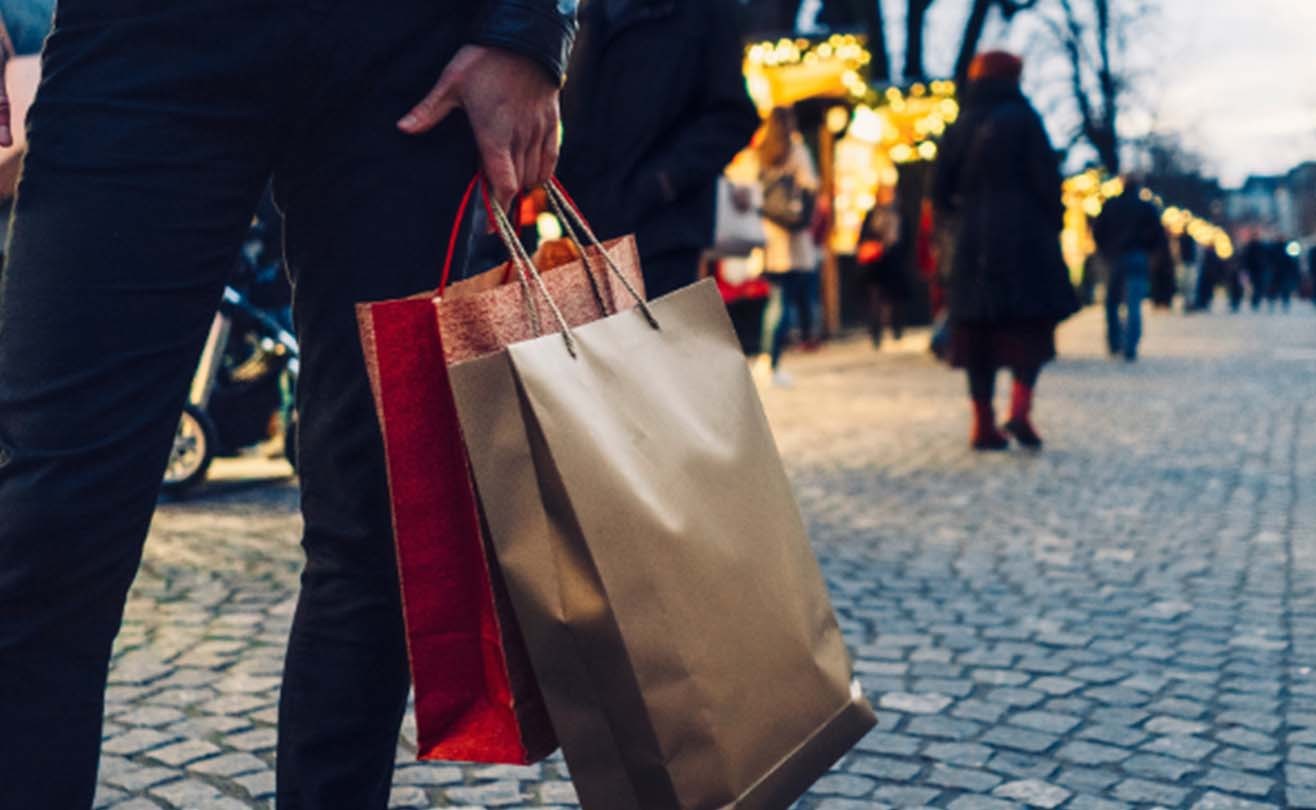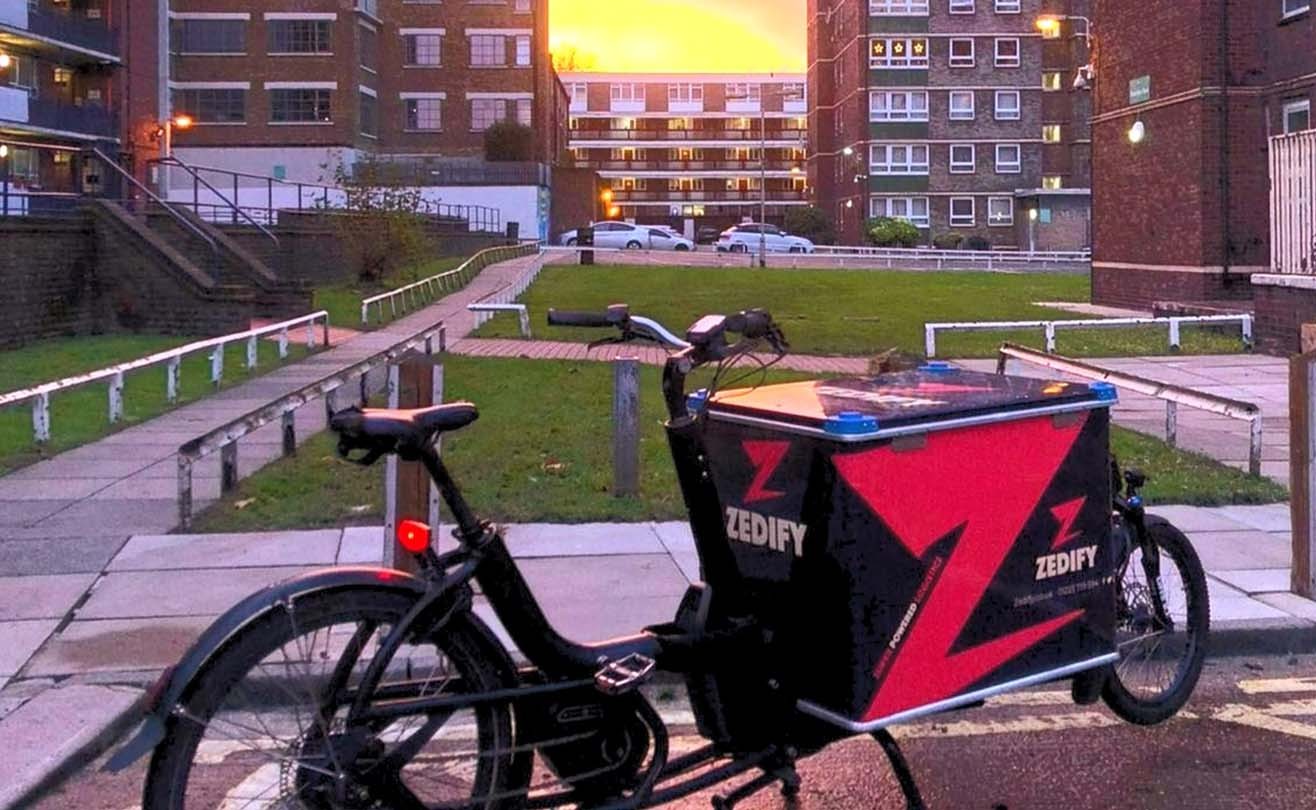
SlashingScope3withinnovationsinlastmile
 February 21st, 2024
February 21st, 2024 Bex Young
Bex Young 10 minute read
10 minute readSlash your scope 3 emissions with innovations in sustainable last mile delivery
As businesses, we’re under constant pressure to deliver – especially when deliveries are a key part of our business model! Being cost effective and reliable with your deliveries are non-negotiables for consumers but, more and more so, having a clear and open plan for improving sustainability across the supply chain is super important, too. Luckily, innovations in last mile delivery are on the up and retailers can take advantage, now, to help cut their scope 3 emissions.
Adopting a super low-carbon approach to your last mile delivery is a great way to meet the regs and appeal to customers. In this article, we’ll be focusing on “scope 3” emissions, including their impact and how they can be reduced. Wouldn’t say no to a little recap on what “scope 3” emissions are? You’ve come to the right place.
What are scope 1, scope 2, and scope 3 emissions?
These terms were originally coined in the Greenhouse Gas Protocol of 2001, with the aim of developing universal reporting standards for businesses and to classify different sources of greenhouse gases. They’re still used today, as important terms for businesses to understand when trying to improve their environmental impact.
- Scope 1 emissions
These are greenhouse gas emissions that can be directly tied to a business, such as the carbon emissions from a fleet of vehicles they own. Emissions from vehicles like diesel vans would fall into scope 1 emissions.
- Scope 2 emissions
This covers certain types of emissions that are indirectly tied to a business, so although the organisation is not directly responsible for causing the emissions, they are ultimately responsible for them. A common example of scope 2 emissions would be the ones involved in generating the electricity that a business needs to operate, or the electricity to charge its own electric vehicles or power office and warehouse units.
- Scope 3 emissions
Aside from the emissions directly involved in your business, there can also be significant emissions you’re indirectly responsible for both upstream and downstream of your business operations. These are scope 3 emissions and often account for the largest percentage of a business’ climate impact.
Scope 3 emissions cover product lifecycles and emissions associated with suppliers, and can form a far-reaching map that accounts for all the carbon you could be associated with. For example, new car dealerships will have high scope 3 emissions due to the embodied carbon emissions that result from manufacturing the vehicles they sell. scope 3 also covers third party supply chains and end of life emissions, among others.
When it comes to ecommerce businesses using third parties to deliver their products in the last mile, scope 3 is where the focus lies.
Challenges to tackle when it comes to your scope 3 emissions
The drive towards sustainability has meant a lot of changes for businesses, both in their operations and in terms of public expectation. Many businesses start with tackling Scope 1 and 2, as these can be directly controlled by your business. Scope 3, on the other hand, can be a lot harder to control.
For scope 1 and 2, tactics like reducing carbon emissions from company owned vehicles or introducing renewable energy sources to curb dependence on energy providers are proven, effective ways to reduce this part of emissions.
The issue is, according to a recent government report, scope 3 emissions account for around 80-95% of total emissions for the majority of organisations. Even though these emissions may seem out of your hands, there’s still things you can do – an effective approach to reducing scope 3 emissions requires businesses to take a look at their entire value chain and come up with a range of solutions.
Another challenge for businesses trying to slash their emissions is that modern supply chains and manufacturing processes involve numerous stakeholders, and many complicated steps. This means that you won’t always be in complete control, so managing scope 3 emissions requires engagement and collaboration across your supply chain. Increasingly, businesses are looking for suppliers that can help them on their journey to net zero through collaboration and innovation.
Ultimately, a true net zero approach to greenhouse emissions involves reducing or eliminating all scope 3 emissions. Organisations will need to plan ahead and create strategies to tackle all types of emissions associated with their operations.
While at one time, businesses were simply looking to calculate emissions and offset them, we now know that reaching net zero will require real reductions, and to achieve that we need real innovation, not just a financial transaction. The good news is that innovation and investments in this area can often pay dividends either from efficiency improvements or from driving commercial growth.
Innovations in last-mile delivery that reduce Scope 3 emissions
The logistics process often causes the highest amount of scope 3 emissions for retailers, making it a prime area to focus your sustainability efforts. Innovations in last-mile delivery services can help businesses to drastically reduce their scope 3 emissions, and in turn move towards their net-zero goals.
Here are some examples of recent innovations in sustainable last mile deliveries:
Pick Up Drop Off (PUDO) points. Usually referring to lockers or parcel shops, these locations have provided greater convenience for those unable to collect their parcels at home. PUDO points also eliminate the chance of missed deliveries, increasing the efficiency and effectiveness of last-mile delivery. According to Retail Economics, nearly ¾ of consumers still prefer home delivery over out of home, but there is a fairly equal split when it comes to returning items where users are much happier to use PUDO points.
- Electric Vehicles.
Some logistics companies offer fully electric fleets, and many major courier services are transitioning to electric vehicles (EVs) for the last mile. If you’re working with a logistics company who uses EVs, make sure you’re clear on how often EVs will be used in practice vs conventional vehicles. Middle-mile electrification is still in its infancy, but also has the potential to drive down total emissions-per-parcel.
- Improved Route Optimisation.
Advancements in delivery route optimisation have streamlined courier services. New technology allows drivers and riders to automatically adjust routes according to a wide range of factors, ensuring customers receive their parcels as soon as possible, with the lowest possible emissions.
- Cargo Bikes and Microhubs.
Designed to cut congestion, drive down emissions, and help to create more liveable cities – cargo bikes are the last-mile delivery solution for an eco-friendly future. To unlock the power of cargo bikes, operators use edge of city microhubs, where larger vehicles can inject parcel volumes, removing the need for large, polluting, congestion-causing vehicles to move about in busy urban areas. This model is often faster than traditional methods of last-mile delivery like those centred on regional distribution hubs and fleets of diesel or electric vans.
Keen to read more on topics like this? Browse our related articles below.
Find out what will happen if we don’t restrict the use of diesel vans
Zero emissions: what does it mean? Find out here
Find out more about Zedify.




